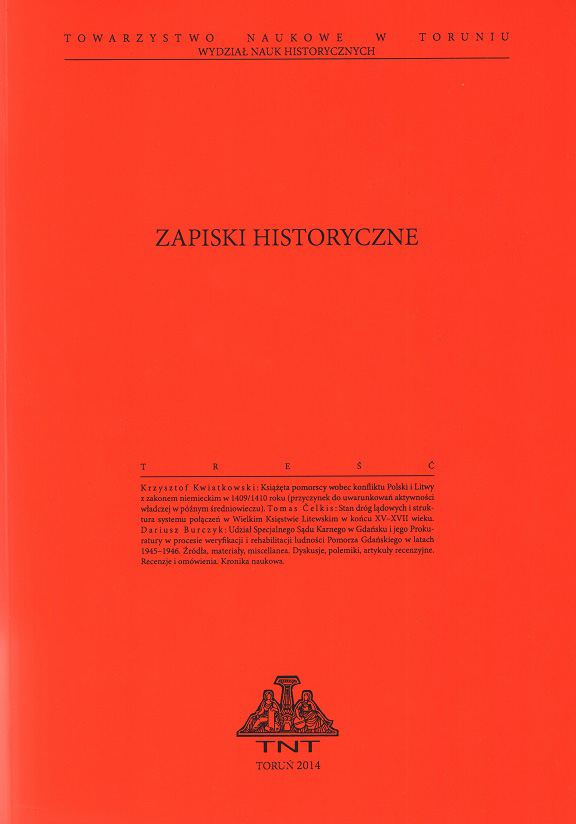Dom Gotski w Bażantarni pod Białymstokiem
Gotski House in Bażantarnia near Białystok
Several Remarks on the Margin of Józef Maroszek’s Findings
Author(s): Ryszard MączyńskiSubject(s): Cultural history, Architecture, Local History / Microhistory, Modern Age
Published by: Towarzystwo Naukowe w Toruniu
Keywords: Neo-Gothic architecture;Białostocczyzna;the 18th century;park buildings;aristocratic manor houses
Summary/Abstract: A quarter of a year ago the regional journal Białostocczyzna [Białystok Land], issued under the auspices of the Scientific Society in Białystok, there was published an article written by Józef Maroszek titled Sentimental Vocluse park near Białystok set up in 1767. The author of the publication put forward theses concerning not only the garden itself, but also Gotski House [Dom Gotski] situated in the park. Nowadays, there are no remains of the building erected over a spring which ejected water from below the house, nor after the whole garden complex referred to as Bażantarnia. Nevertheless, the pavilion seems to play a major role in the history of Polish art as it constituted the early sign of interest in Neo-Gothicism. Perhaps it would not make sense to some back to the old findings but for the fact that they have appeared in the Internet and are not free from mistakes: the castellan of Cracow Jan Klemens Branicki (1689–1771) had nothing to do with Dom Gotski in Bażantarnia, which was built many years after his death. Dom Gotski in Bażantarnia was constructed at the beginning of the second half of the 1780s upon the foundation of the widow of the Cracow castellan – Izabela Branicka née Poniatowska (1730–1808). The designer remains unknown, but the style of the work may indicate that the building was designed by the architect Szymon Bogumił Zuga (1733–1807), specializing in garden constructions. The idea of the Białystok park referred to the tradition connected with the retreat where the Italian poet Francesco Petrarka, the author of Sonnets for Laura used to spend his time. The analogy was found and exposed in the poem Na Wokluz, wody i dom gotski pod Białymstokiem by the Polish sentimental poet Franciszek Karpiński (1741–1825), who was a friend of Branicka’s and frequently visited the Versailles of Podlasie. Dom Gotski, which played the role of a bath, constituted a picturesque element of the garden complex. It was to be the temple of “thinking” allowing the thinker to reflect on the human condition. It was also the site of the homage to the benevolence of Izabela Branicka. The Neo-Gothic form of the building contributed to the popularization of this “ancient”, but at the same time modern style. It might affect the preferences of concrete people who had an opportunity to spend time in Białystok, the example of which are the drawing by Anna Potocka-Wąsowiczowa née Tyszkiewicz (1779–1867). The article written by Józef Maroszek, which was the main reason for starting the debate and formulating totally different theses, may constitute a model of how not to write a scientific article. The fact of the author’s referring to written and iconographic sources ostensibly gives it the reliability, but the conclusions made on the basis of cursorily read and examined sources reveal that all the conclusions were drawn not exactly on their grounds and were exclusively the subjective projection of the author’s vision. He did not make an effort to verify and compare documents, to analyse and confront facts, or to look closely at the people participating in the above mentioned event, which should be the foundation for any reliable research activity. The failure to follow the above mentioned rules led to a number of interpretation mistakes, which do not allow us to defend neither the details nor the general idea of the article.
Journal: Zapiski Historyczne
- Issue Year: 83/2018
- Issue No: 2
- Page Range: 217-242
- Page Count: 26
- Language: Polish

